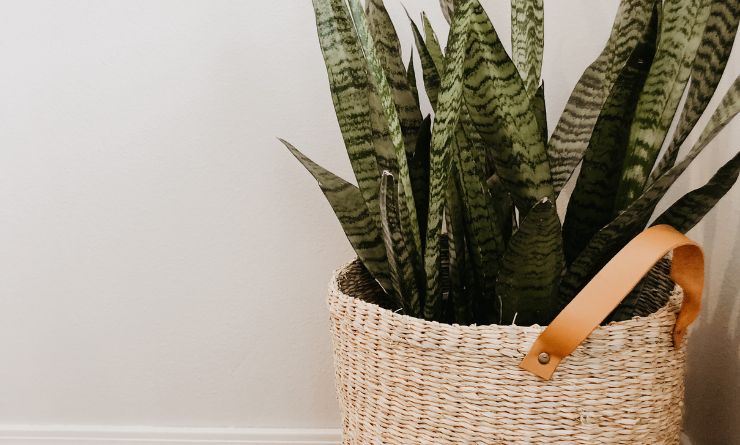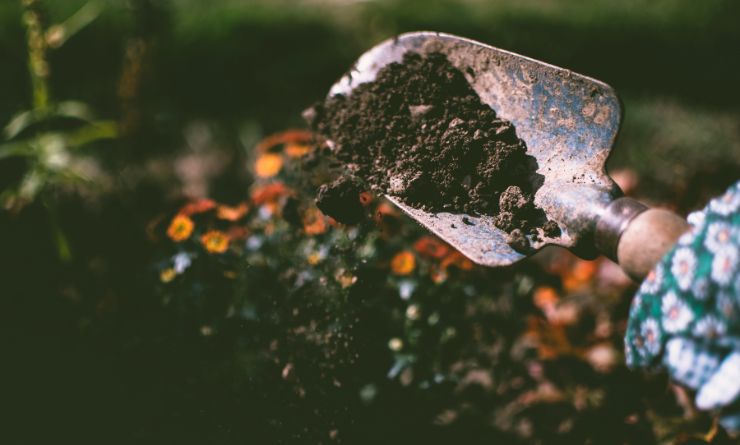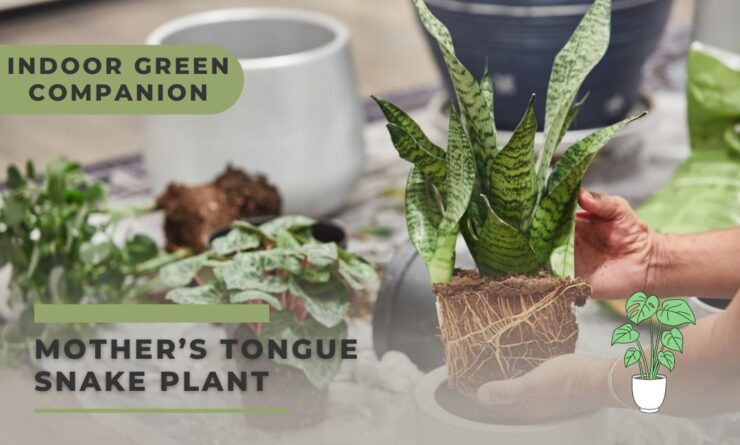The Mother-in-Law’s Tongue, or the “Snake Plant” as it’s often affectionately called, is a plant that carries with it a captivating blend of folklore, history, and practicality. This plant, with its long, upright, and pointed leaves, has a striking appearance that is hard to ignore. Its vibrant green color, coupled with the unique patterns on its leaves, makes it a favorite among enthusiasts and interior decorators alike.
The plant’s intriguing name, “Mother-in-Law’s Tongue,” is believed to have originated from the sharpness of its leaves, humorously likened to the stereotypical sharp tongue of a critical mother-in-law. On the other hand, its alternative name, “Snake Plant,” is derived from the plant’s resemblance to the scales of a serpent
Definition and History
Also known as Snake Plant or Sansevieria, has a long history. Ancient Egyptians believed it brought luck and kept away evil spirits. It’s popular today for its durability and hardiness, needing little care.
It has upright leaves with pointed tips and yellow stripes down the middle. Grows up to three feet tall. Dark green in color. It can purify air too, by getting rid of toxins like formaldehyde and benzene.
To look after it, put in bright, indirect sunlight and water infrequently. The soil should be well-draining. Pet owners should be aware of its toxicity.
Synonyms of Mother-in-Law’s Tongue

Mother-in-Law’s Tongue, also known as Sansevieria Trifasciata, Bowstring Hemp Plant, Snake Plant, and Dwarf Sansevieria, is a traditional medicinal and native to West Africa. It’s popular worldwide as an ornamental houseplant. Each name reflects the unique features that make it a global favorite for nature and plant lovers.
Different varieties exist with different characteristics such as shape, color, texture, leaf size, and toxicity levels to pets. Sansevieria species have many subspecies and cultivars, perfect for indoors or outdoors. Snake plants have up to 70 cultivars with distinct leaf patterns and shapes.
Size and shape of the leaves

The Mother in Law’s Tongue has a unique look. Its leaves come in many sizes and shapes. Some can reach two meters in length, while others are about 5-6 centimeters wide. The leaves point up, like swords or spears.
The texture and color of the leaves vary. They may be smooth or rippled, and green, yellow, or silver. Each variety has its pattern and markings too.
Color and texture of the leaves

The Mother in Law’s Tongue plant has amazing colors and textures on its leaves. There’s a deep, lush green and some variations with yellowish stripes or light whitish-green. The surface of the leaves is usually smooth and glossy. But some, like Sansevieria trifasciata Laurentii, have yellow-edged leaves. You may even spot thicker, leathery-textured leaves.
These come in a variety of sizes. Some have wide flatter leaves with veins running parallel. Colors and textures can change if care isn’t done right. For example, dim light can cause yellowing and sagging.
Growing conditions and care guidelines

Mother-in-Law’s Tongue, commonly known as the “Snake Plant”, is a low-maintenance and easy-to-care-for indoor. In this section, we will outline the growing conditions and care guidelines that are essential for the plant’s health and longevity. We’ll cover everything from the ideal amount of sunlight and watering recommendations to soil preferences and the plant’s toxicity to cats and dogs.
| Topic | Information |
|---|---|
| Sunlight requirements | – Mother in Law’s Tongue can thrive in full sun and low light conditions. Direct sunlight can burn the leaves. |
| – Consistent light sources will help it grow better. | |
| Watering recommendations | – Water sparingly every 2-3 weeks. |
| – Avoid watering directly onto the leaves. | |
| – Let the soil dry between watering sessions. | |
| Soil preferences | – Loose, porous soil with good water penetration is ideal. |
| – Sandy soil with a 1:2 ratio (sand: soil) or loamy soil with a ratio of 1:1:1 (sand:soil: peat) are great options. | |
| – Avoid large rocks and debris as they inhibit root growth. | |
| – Improve drainage by adding a layer of small stones or gravel in the pot. | |
| Toxicity to pets | – Mother in Law’s Tongue is toxic to cats and dogs if ingested. It contains saponins, which can cause gastrointestinal distress. |
| – Symptoms include drooling, swelling of lips, tongue, and mouth, vomiting, and diarrhea. | |
| – Keep the plant out of reach of pets to avoid harm. | |
| Benefits | – Air-purifying ability: Sansevieria helps remove toxins and converts carbon dioxide into oxygen, increasing humidity levels. |
| – Longevity: It can survive for long periods without watering and can grow up to six feet tall with the right care. | |
| – Low-maintenance nature: Requires little water, can survive in low light, and has a slow growth rate, requiring minimal pruning. |
Varieties

Mother in Law’s Tongue, also known as Snake Plant, comes in various succulent types, including Sansevieria bally, Sansevieria cylindrica, Sansevieria zeylanica, Sansevieria masoniana, and Sansevieria desert. This section will introduce each of these varieties and provide insight into their unique characteristics and features.
| Variety Name | Description |
|---|---|
| Sansevieria Trifasciata Hahnii | Small leaves with green and yellow variegation. Also called Bird’s Nest Snake Plant. |
| Sansevieria Fernwood | Cylindrical leaves growing up. |
| Sansevieria Golden Hanii | Frosty yellow and green on the leaves. |
| Sansevieria bally | Low-maintenance houseplant from Kenya and Tanzania. Prefers well-draining soil and minimal watering. Thrives in bright, indirect sunlight but can tolerate reduced light. Visually striking and compact, unlike the cylinder-shaped Sansevieria cylindrica. Perfect for beginners and those looking for an unusual addition to their collection. |
| Sansevieria cylindrical | Also known as African spear plant or cylindrical snake plant. Succulent from Angola with cylindrical, pointed green leaves having light and dark horizontal striping. Reaches a height of 4 feet. Popular as an indoor plant due to its unique shape. Requires bright, indirect sunlight and well-draining soil. Can handle low light conditions and is low-maintenance and air-purifying. |
| Sansevieria zeylanica | Low-maintenance indoor plant, up to 3-4 feet tall, with light and dark green stripes. Likes indirect sunlight and well-drained soil. Air-purifying qualities, removing toxins from the air. Requires minimal watering and should be allowed to dry between watering sessions to avoid root rot. |
| Sansevieria masoniana | Low-maintenance indoor plant with an elegant, tropical look. Requires bright, indirect sunlight and well-drained soil with little water. Discovered by American botanist Donald Mason in Africa in 1936. Great for purifying the air in your home. |
| Sansevieria desertion | Native to North America, specifically the Sonoran Desert (Arizona, California, and Mexico). Greenish-gray hue with darker green markings. Leaves have thick, waxy cuticles for moisture retention. |
Common Pests and Diseases

Mother in Law’s Tongue, also known as Snake Plant, is a popular indoor plant admired for its hardy nature and air-purifying qualities. However, no plant is immune to pests and diseases, and Snake Plant is no exception.
In this section, we will explore the common issues faced by Snake Plant owners, including:
| Problem | Description |
|---|---|
| Root rot | A fungal disease that can occur due to overwatering and poorly draining soil, causing the roots to rot. |
| Rust | A fungal disease that causes rust-colored spots on the leaves. It thrives in moist conditions and poor air circulation. |
| Mealybugs | Tiny, soft-bodied insects that appear as small cottony masses, usually white or grey. They can cause significant damage to the plant, secreting honeydew that attracts ants. |
| Spider mites | Tiny arachnids that can cause damage by spinning webs and leaving yellow, speckled leaves. They prefer warm and dry environments. |
Preventing Pests and Diseases

Preventing these common problems from affecting your Snake Plant is essential for its health and longevity. Here are some preventive measures:
- Root rot prevention: Ensure your Snake Plant is in well-draining soil and avoid overwatering. Allow the soil to dry out between watering sessions and avoid leaving the plant in standing water.
- Rust prevention: Water the plant carefully, keeping the leaves dry. Improve air circulation around the plant to reduce humidity, as rust thrives in moist conditions. If rust appears, remove affected leaves and use a fungicide as directed.
- Mealybug prevention: Regularly inspect your plant for signs of mealybugs, especially in the soil and leaf crevices. If you spot them, isolate the infected plant and treat with insecticidal soap or neem oil.
- Spider mite prevention: To avoid spider mites, maintain a humid environment around the plant. Regularly mist the leaves and clean them with a damp cloth. If infested, prune affected leaves and apply a neem oil solution every four days for two weeks.
- Quarantine new plants: Before introducing new Snake Plants to your collection, quarantine them for a few weeks to ensure they are not carrying any pests or diseases.
- Maintain plant health: Keep your Snake Plant healthy and stress-free by providing the right amount of light, water, and well-draining soil. Healthy plants are more resilient to pests and diseases.
By following these preventive measures and being attentive to your Snake Plant’s needs, you can ensure it stays healthy and thriving, bringing beauty and air-purifying benefits to your indoor space.
- If you want to read more Other articles check here.
Optimal planting time

Choosing the best time to plant Mother in Law’s Tongue is essential for its healthy growth and long life. Spring or early summer is ideal – when the weather is warm and daylight hours are longer. A well-draining potting mix with ample nutrients should be chosen. Depending on the variety, water thoroughly but infrequently, allowing the soil to dry before watering again. A pot with a drainage hole at the bottom is preferred. Bright but indirect sunlight is best. Avoid extreme temperatures during planting and thereafter.
Improper planting times or poor growing conditions can result in stunted growth or death of this hardy houseplant. Choose a well-draining potting mix and a spot with adequate light. Give it enough space without overcrowding. Low maintenance requirements and air-purifying abilities make it a great choice. Don’t miss out on this versatile plant – add a unique touch of greenery to your home with Mother-in-Law’s Tongue!
FAQs
What are the characteristics of the leaves?
The stiff leaves grow vertically from a basal rosette, and mature leaves are dark green with light gray-green cross-banding and usually range from 70–90 centimeters long and 5–6 centimeters wide.
How often does it need to be watered?
Require watering every 2 to 8 weeks, depending on the humidity level and environment. Allow top soil to become dry before watering.
Is toxic to cats and dogs?
Yes, it is toxic to cats and dogs if ingested. Symptoms include vomiting, diarrhea, and lethargy. Keep it out of reach of pets.
When is the growing season?
The optimal time to plant and report is in the spring. It is a South African succulent that needs warmth and sunlight year-round.
Is Snake Plant a flowering?
Yes, it can bloom with small, white flowers on a tall stem from the base of the plant when it is a few years old. The flowers are beautifully scented at night.
Conclusion
The Mother in Law’s Tongue, or Snake Plant, is a famous home plant. It offers many advantages, like purifying air, which helps allergy sufferers. This is easy to care for. Provide it with well-draining soil and water only when the soil is dry. Overwatering can cause root rot. Avoid direct sunlight.
This plant absorbs carbon dioxide and releases oxygen at night, making it a great bedroom flower. It helps fight indoor air pollution; a recent study showed it eliminates pollutants like formaldehyde. The Snake Plant can survive with little attention, showing how resilient it is. Thus, it’s an excellent option for both novice and experienced plant owners.













